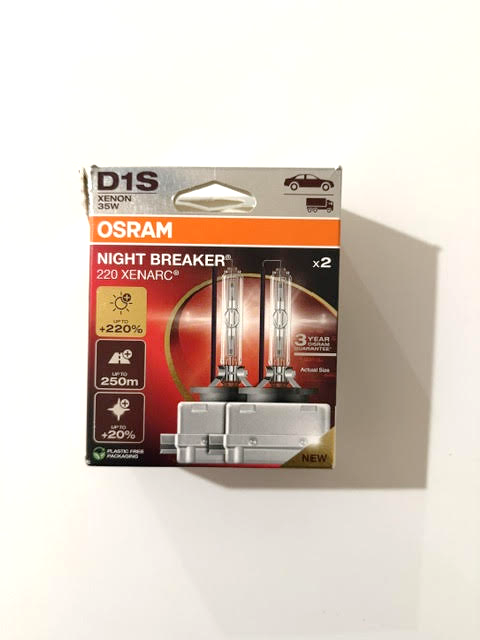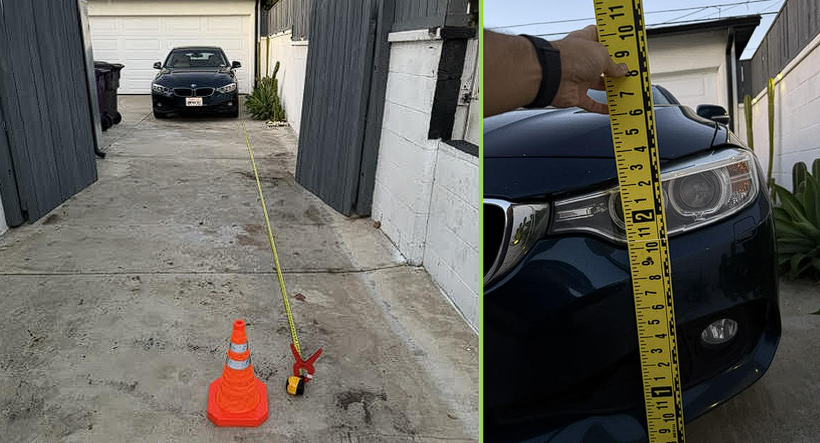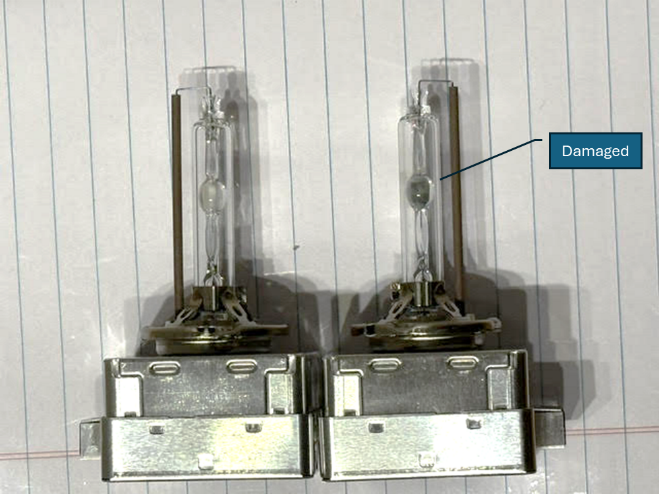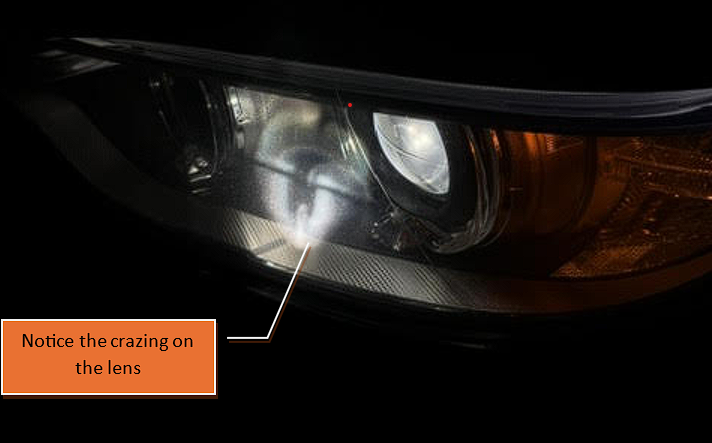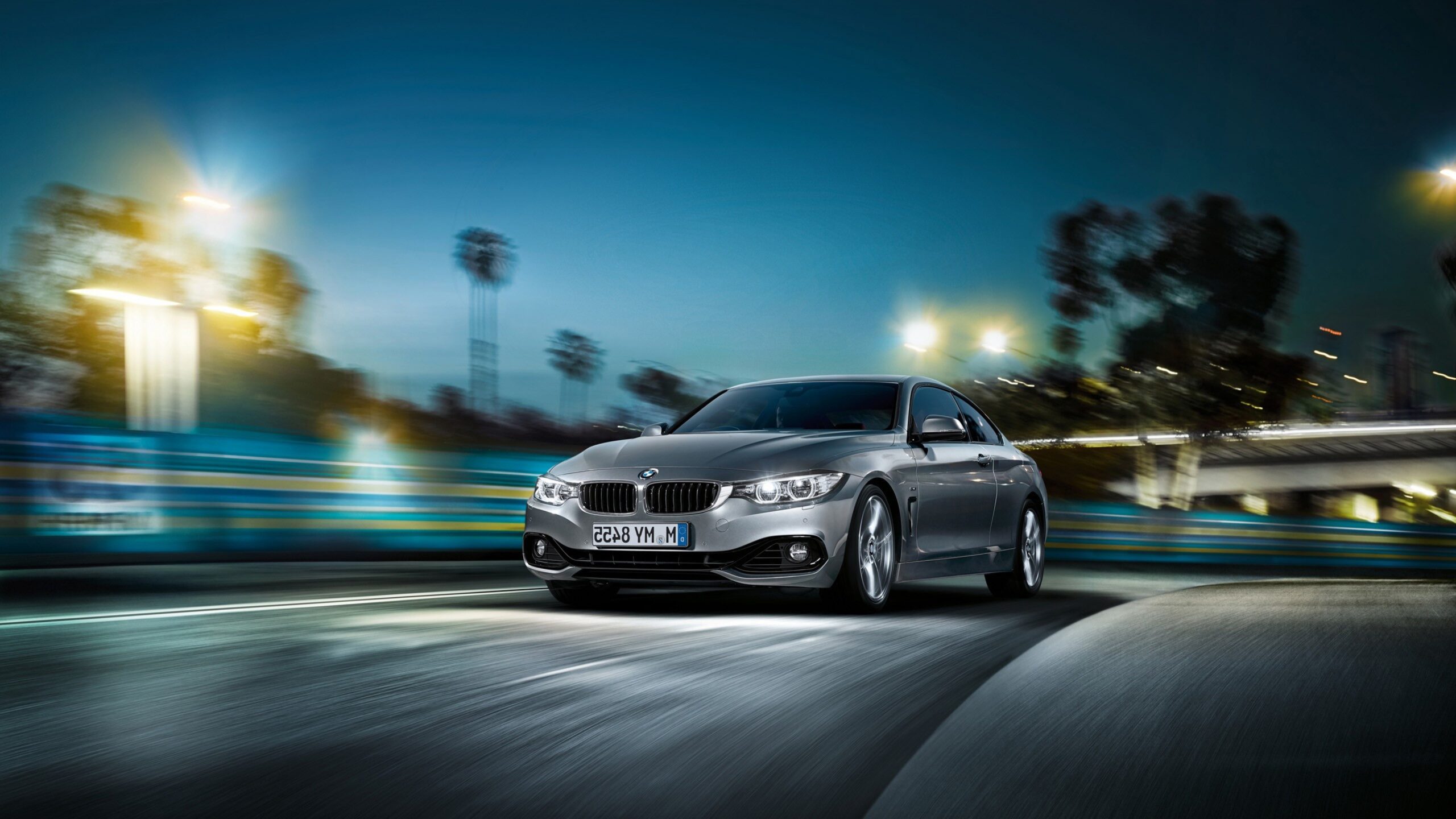
Article by Swaroop Dinakar, Managing Scientist at Driver Research Institute.
Last weekend I found myself in the unfortunate situation of having the right headlight malfunction on my car. Having handled headlight assemblies at many junkyards, I thought this to be an easy fix (and it was). More importantly, I was presented with the opportunity to measure how much difference a new set of headlight bulbs make. I pulled out my light meter (calibrated of course) and got to doing literal backyard science.
When driving at night, we rely on two main sources of light for object recognition. First is ambient lighting, either from the sun, streetlighting or any business lighting. Secondly, we have our headlights that project light forwards to illuminate the roadway and objects in the roadway. Hence, headlights play a very important role in nighttime driving, and driving with a single headlight halves the total light output. So, let’s get to the testing.
Step 1: Identify the headlights on my car
A quick search on Sylvania revealed that my 2015 BMW 428i uses a D1S style HID bulb. The car has projector style headlights where a lens is present in front of the bulb to project light ahead. While HID bulbs started to grow in popularity for a while, the onset of LED bulbs started making them a rarity. When we were analyzing headlights from the IIHS (Insurance Institute for Highway Safety) database for RESPONSE®, we found that HID headlights represented only 16% of the 907 low beam headlights at the time. LEDs contributed over 57%.
Once the headlights were identified, I had to order them. With time and convenience being of the essence, online ordering was the way to go. With numerous options to choose from, online posts recommended the OSRAM Night Breaker 220 were the way to go. These are claimed to be the brightest variant made by the manufacturer. The 220 refers to headlights that are 220% brighter compared to the minimum legal standard. While yes, the OEM part would have been preferred for this experiment, they were not meeting the required timelines.
Step 2: Experimental Setup
I parked my car at the start of the driveway and measured a spot 25 ft ahead of the still working left headlight. I used my trusty Extech LT300 illuminance meter to collect my illuminance measurements. Once the sun was 12 degrees below the horizon, I measured the ambient illuminance in my driveway to be less than 0.5lux. Then I went about measuring the before and after on the left headlight. I collected measurements at ground level, 0.25m (10inches), 0.63m (height of the bulb), and at 1m off the ground. The 0.25m number is especially important since CIE (International Commission on Illumination) uses this for illumination height for object recognition. IIHS also uses this height for its headlight testing. The BMW is equipped with curve adaptive headlights, so I collected my measurements with the tires facing forward and turned all the way to the right. I did not collect the lighting with the steering wheel to the left because it illuminated an additional turning light on the left side of the vehicle.
While the daylight running lights were active on the right headlight as well, the resultant illuminance would be common across my lighting measurements before and after replacement. Additionally, the light reflecting of the white walls would have been proportional (but by inverse square law) across both my measurements.
Step 3: The Results
Here is an image of my original headlight bulbs, with the damaged one on the right. Below is a table showing the illumination in lux with the steering wheel (and headlights) positioned straight or turned to the right. It also includes a comparison between the OEM headlights and Night Breaker headlights.
| Illuminance at 25ft- Measurements in LUX | ||||||
| Straight Config | Right Turned Config. | Improvement | ||||
| Height | OEM | Night Breaker | OEM | Night Breaker | Straight | Right turned |
| 0.0m | 79 | 101 | 92 | 110 | 28% | 20% |
| 0.25m | 165 | 234 | 102 | 145 | 42% | 42% |
| 0.63m | 24 | 32 | 20 | 27 | 33% | 35% |
| 1.0m | 14 | 18.5 | 14 | 16 | 32% | 14% |
Much to my surprise, there was an improvement. The highest improvement was at 0.25m, which is associated with the peak beam of the headlight with a whopping 42% improvement. While not the promised 220%, does this mean my headlights are 42% better? It is more complicated than that as we will see in the following section. My main skepticism going into this was that headlight output is dependent on the headlight power, and the age of the headlights. While the bulbs themselves degrade slightly over the years, most of the degradation in illuminance comes from degradation of the polycarbonate lens. The constant battering from road debris, dust and weather lead to the crazing of the lens, which reflect light away from the originally intended direction. For example, in a 2006 Subaru Tribeca, a change in the headlight bulb resulted in no noticeable improvement in headlight throw distance. Also, for my nearly 10 year old car would fall below the 33rd % of headlights that were measured by Jeff Muttart in his 2013 study. Are the Day Breakers that much better?
Step 4: Explaining the results
While a 42% improvement is great, what are the practical implications to this. Light follows the inverse square law. Which means that every time we double the distance, our illuminance value is a quarter of the previous distance.
For our experiment, let’s calculate our recognition thresholds for recognizing a pedestrian in light, grey and dark clothing. We have seen in research that we need between 2-3 lux to recognize pedestrians and non-motorists in light colored clothing, near 10 lux for a pedestrian in grey clothing, and near 20 lux for a pedestrian in dark colored clothing.
In this scenario we mapped only the left headlight, however, our research showed that manufacturers simply doubled this to understand the total output from 2 headlights (SAE J1383). They informed us that the left and right headlights have a similar shape, and at a large distance the separation between them is less relevant. We will use this approach for calculations using the peak beam at 0.25m. This will give us a theoretical throw distance for the old and new headlight at different lighting thresholds. Yes, some reflections from the pavement are lost, hence calculated distances are likely shorter than the true throw distance.
| Straight Config. | Right Turned Config. | Improvement (in feet) | ||||
| Thresholds | OEM | Night Breaker | OEM | Night Breaker | Straight | Right turned |
| 3lux | 185.4 | 220.8 | 145.8 | 173.8 | 35.4 | 28.0 |
| 5lux | 143.6 | 171.0 | 112.9 | 134.6 | 27.4 | 21.7 |
| 10lux | 101.6 | 120.9 | 79.8 | 95.2 | 19.4 | 15.4 |
| 20lux | 71.8 | 85.5 | 56.5 | 67.3 | 13.7 | 10.9 |
The results of this experiment show that replacing headlights, even on an older vehicle, can yield a meaningful improvement in illumination. While the advertised 220% increase didn’t fully materialize, a 42% gain at key heights and a 19% theoretical increase in illumination distance suggests that replacing old headlights may improve performance. However, on higher speed roadways, the improvement in recognition distance may be insufficient for most attentive drivers to avoid colliding with a darker colored object.
However, headlight performance is affected by multiple factors, including lens degradation, beam alignment, non-motorists running into the side of the beam, and even the type of road surface. If you’re interested in discussing how headlight technology has evolved, how real-world visibility compares to manufacturer claims, or any related research on driver perception and nighttime driving, feel free to reach out. I’d love to hear your thoughts and experiences!

